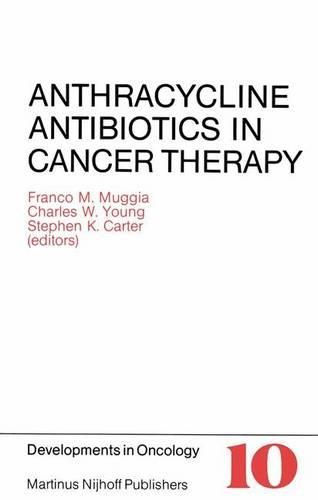Readings Newsletter
Become a Readings Member to make your shopping experience even easier.
Sign in or sign up for free!
You’re not far away from qualifying for FREE standard shipping within Australia
You’ve qualified for FREE standard shipping within Australia
The cart is loading…






F. M. MUGGIA When faced with the inadequacies of current cancer treatment, we prefer to look at what the future may hold. Quite often, we take for granted the past, preferring research into totally new areas. However, the persistent development of fertile soil may yield surprising rewards for those who choose to build on the knowledge of the past–hence, this symposium on anthracycline antibiotics. Although the anthracycline antibiotics represent much of the present and future of cancer treatment, their actual use c stretches back barely two decades to the pioneering efforts of Aurelio Di Marco, who characterized the antitumor properties of daunomycin and adriamycin. * The clinical application of these two compounds heralded a decade of excitement among oncologists dealing with pediatric tumors, breast cancer, leukemias, and lymphomas, and opened new hope for patients afflicted with sar- comas and a variety of other tumors that had been deemed - sistant to chemotherapy. These successes were tempered with the realization that the antitumor effect of anthracyclines could be achieved at times only at the very high price of risking cardiac decompensation and, almost invariably, with the occurrence of alopecia and other acute toxicities. This record of past achievements and problems has slowly given way to a present increasingly illuminated by our ability to modify the distressing toxicities of these agents. Detailed clinical studies supplemented by ingenious laboratory models have gradually elucidated mechanisms and risk factors im- plicated in the cardiomyopathy.
$9.00 standard shipping within Australia
FREE standard shipping within Australia for orders over $100.00
Express & International shipping calculated at checkout
F. M. MUGGIA When faced with the inadequacies of current cancer treatment, we prefer to look at what the future may hold. Quite often, we take for granted the past, preferring research into totally new areas. However, the persistent development of fertile soil may yield surprising rewards for those who choose to build on the knowledge of the past–hence, this symposium on anthracycline antibiotics. Although the anthracycline antibiotics represent much of the present and future of cancer treatment, their actual use c stretches back barely two decades to the pioneering efforts of Aurelio Di Marco, who characterized the antitumor properties of daunomycin and adriamycin. * The clinical application of these two compounds heralded a decade of excitement among oncologists dealing with pediatric tumors, breast cancer, leukemias, and lymphomas, and opened new hope for patients afflicted with sar- comas and a variety of other tumors that had been deemed - sistant to chemotherapy. These successes were tempered with the realization that the antitumor effect of anthracyclines could be achieved at times only at the very high price of risking cardiac decompensation and, almost invariably, with the occurrence of alopecia and other acute toxicities. This record of past achievements and problems has slowly given way to a present increasingly illuminated by our ability to modify the distressing toxicities of these agents. Detailed clinical studies supplemented by ingenious laboratory models have gradually elucidated mechanisms and risk factors im- plicated in the cardiomyopathy.